IME 26
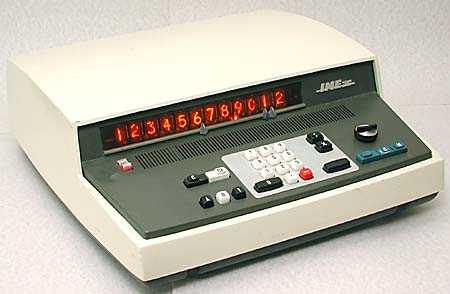
IME 26
Made in Italy by Industria Macchine Elettroniche ("a company of the Edison group") about 1967.
Capabilities - 4 functions, memory.
Display - 12 digits, "Nixie"-type numerical display tubes.
Technology - The 24 logic boards have a total of 424 Germanium transistors and 1074 Germanium diodes. It has a magnetic core memory.
Size - 450 x 480 x 165 mm (17.75" x 19" x 6.5"), 14.6 Kg (32 lbs).
The IME 26 is a simplified version of the earlier IME 84, with which it can be compared, and was promoted for "all commercial arithmetical operations".
An advertisement in February 1968 said "Has instant recall on three operational registers. This is the important feature exclusive to the IME 26 enabling the last operation in each case to be recalled for verification or further processing."
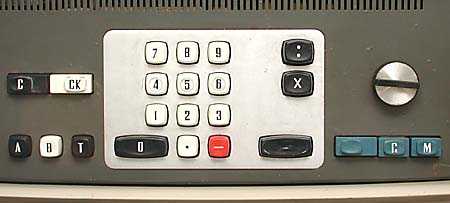
Keyboard of IME 26.
The keyboard operates fairly conventionally, though has some similarities to that of the IME 84. There are 3 registers which are used for calculating and the operator can view the contents of these:
- The "A" key displays the contents of the 1st operation register (the first operand of multiply/divide, or the last number added).
- The "B" key displays the contents of the entering register (the second operand of multiply/divide).
- The "T" key displays the contents of the result (total) register.
The knob on the right selects the decimal point position, the "C" key is the Initial-clear key, and the "CK" key clears whichever register is being displayed.
The black key marked ":" is for division, and the large black,
unmarked, key at the bottom below the "X" key is equivalent to a "+=" key.
The blue keys on the right are for use with the "Auxilliary Register", which we now commonly call a memory register:
- The blue "C" key clears the auxilliary register.
- The "M" key displays the contents of the auxilliary register.
- The blue unmarked key adds the number being displayed to the auxilliary register.
The keyboard of this machine has the same oddity as that of the IME 86 in that when a number key is pressed the number does not appear on the display until the key is released.
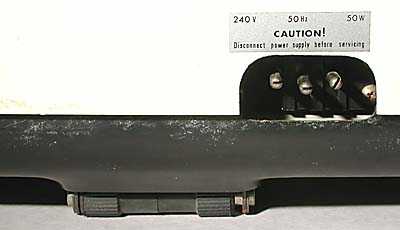
There are wheels at the rear to aid moving this heavy machine on a desktop.
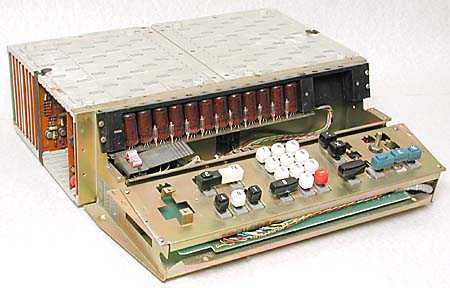
The covers are easily removed to reveal the electronics for servicing, with the 26 circuit boards held in two racks. This chassis was used by several IME calculators, including the IME 84 and IME 86.
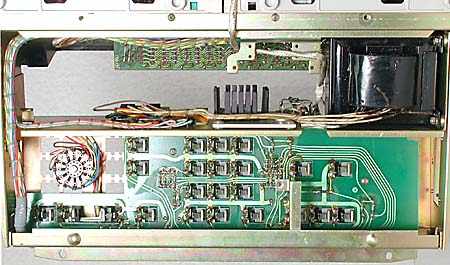
Unlike the IME 84, the keyboard decode logic is not beneath the keyboard, but in the racks.
The main power supply is between the keyboard and the racks of electronics.
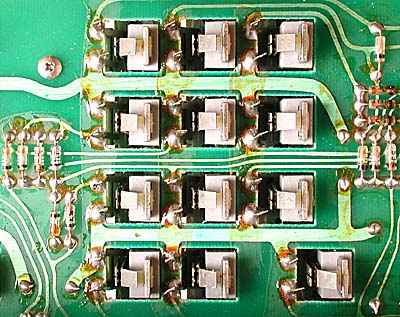
Looking underneath the keys at the crude contact arrangements. Each plastic key presses a bent finger of metal against a pair of adjacent contacts.
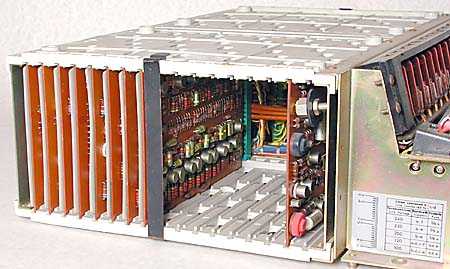
Since the IME 26 has less digits in the display than other similar IME machines it requires less electronics, which is shown by the partially populated left rack.
White, plastic, insulating sheets are
inserted between the closely spaced circuit boards.
The board sitting alone on the right provides the power supplies for the logic boards and the magnetic core memory.
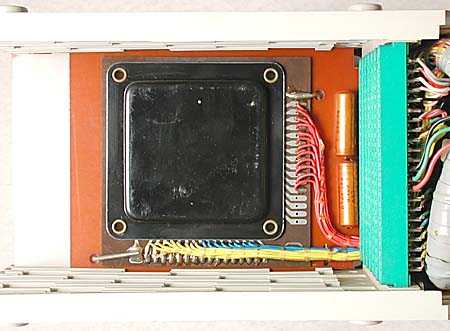
As with the IME 84, the magnetic core memory is contained within a low profile plastic box on a shorter circuit board which is hard-wired rather than plugging in.
Note that only 12 of the vertical
connections to the magnetic core are used, reflecting the 12 digits of the display.Click here to go to the page describing magnetic core memories.
The connectors for the
circuit boards are all individually wired.
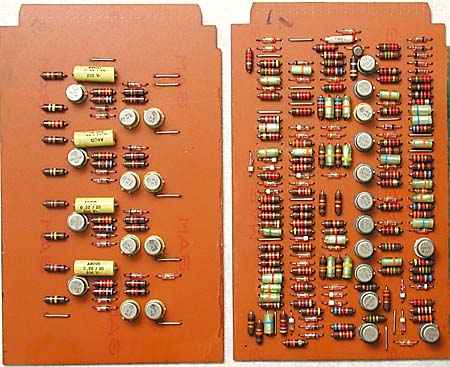
Above and below is a selection of the circuit boards, showing:
- Transistors - circular metal cans often with writing on the top.
- Resistors - dark brown with coloured stripes.
- Diodes - small glass packages with coloured stripes.
- Capacitors - larger yellow, green, and orange packages, with either coloured stripes or writing.
All of the boards have copper conductors on one side only.
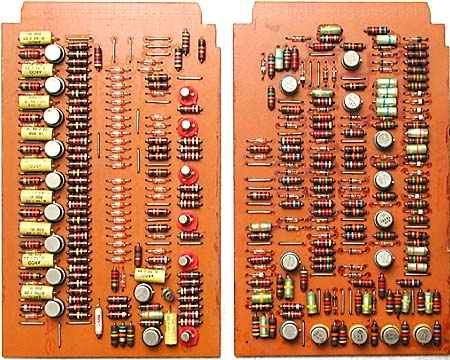
The transistors used are mainly:
- From Texas Instruments, types 2N398, 2N1305, A6, and GA3022C.
- Marked "Cosem", type 2N1305.
- Marked "Ray" (Raytheon ?), types T6055 and T6056.
Type 2N1305 is an Alloy-junction Germanium PNP transistor. It is assumed that the other types are Germanium too.
Grateful thanks to Ken Buckles for the opportunity to acquire this calculator.
Christopher Kavanau has a collection of photographs of early IME electronic desktop calculators on the 'IME S.p.A. PHOTO ARCHIVE' page of his 'MUSEUM OF TRAILING-EDGE TECHNOLOGY' website. Hover over any picture to read the information about it.
Electronic Desk
Calculators
Vintage Calculators
Text & photographs copyright, except where stated otherwise, © Nigel Tout 2000-2025.